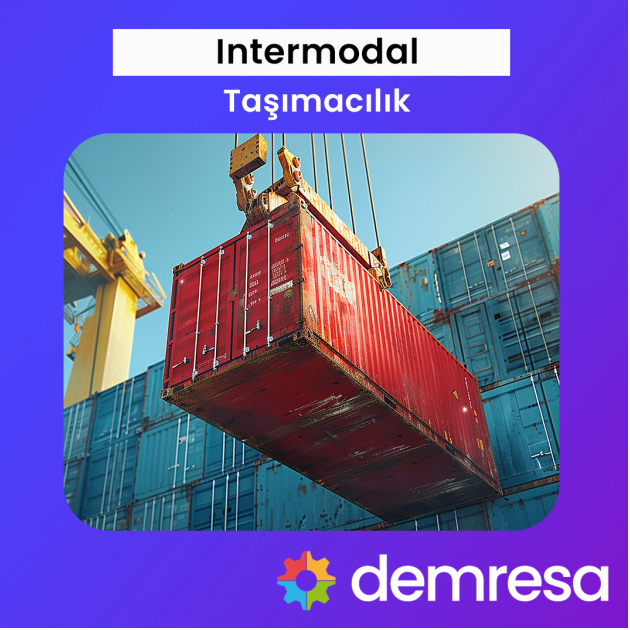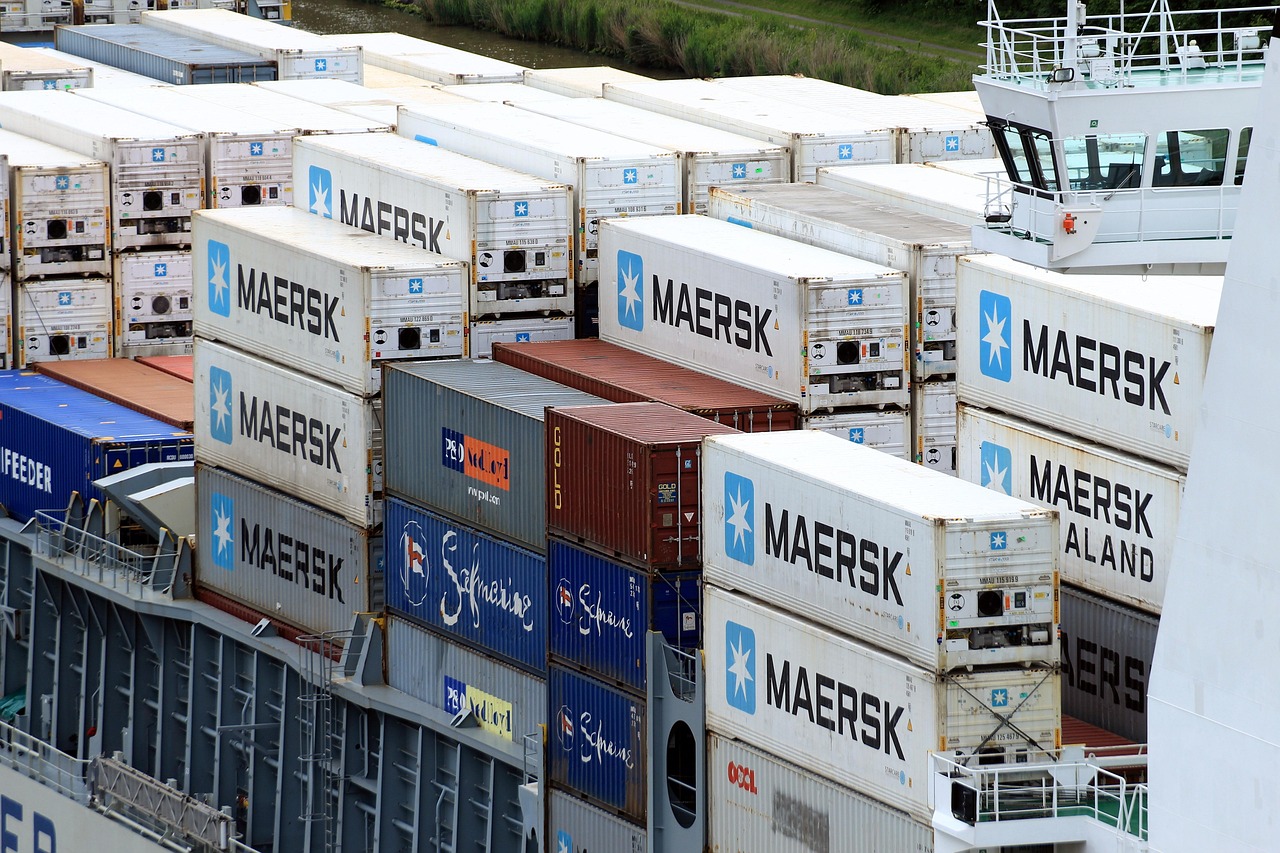
What is Intermodal Transport?
Intermodal transport is a transportation model that offers significant advantages in terms of efficiency, safety, and sustainability in modern logistics. Basically, it means transporting a shipment to its destination using two or more different modes of transportation—typically road, rail, sea, and air. The most critical feature here is that the transport unit (such as a container, trailer, or swap body) is never unloaded; it is simply transferred from one vehicle to another. In other words, even though the means of transport changes, the cargo remains in the same unit without handling.
This system provides both economic and operational benefits, especially in intercontinental or long-distance transport. While road transport offers flexibility and door-to-door delivery, rail and sea transport provide high capacity and cost advantages for bulk transportation. Intermodal transport combines the benefits of these modes, reducing costs as well as saving time and energy.
Intermodal transport is preferred not only for large-volume cargo but also for the transportation of sensitive or valuable products. Moreover, since the goods are handled less during transportation, the risk of damage and loss is minimized. Standing out with its environmentally friendly aspect, intermodal transport plays a key role in the sustainable transportation policies of countries by reducing carbon footprints and preventing traffic congestion.
Important Note
In intermodal transport, the cargo itself is not handled; it continues its journey inside a unit such as a container, trailer, or swap body. Thus, the risk of damage and labor requirements are reduced.
Advantages and Challenges of Intermodal Transport
The rapid adoption of intermodal transport in the logistics world in recent years is based on its many important advantages. First of all, the smart integration of multiple transport modes provides both economic and operational efficiency. Using rail and sea allows for the transportation of high-volume cargo at much lower costs over long distances compared to road transport. Also, as cargo is transferred using standard units such as containers without handling, the risk of product damage and loss is minimized.
Another important advantage of intermodal transport is its low environmental impact. Especially as an alternative to road transport, the use of rail and sea significantly reduces carbon emissions and fossil fuel consumption. This strengthens companies' positions in terms of sustainable transportation and corporate social responsibility. Furthermore, intermodal transport encounters less traffic congestion and road safety issues, increases predictability in delivery times, and adds flexibility to the supply chain. Using different transport modes provides a quick solution to sudden changes or urgent needs in the supply chain.
However, intermodal transport also has various challenges. Because it requires the integration of different transport modes, countries, and companies, strong logistics coordination and information management are essential throughout the process. Delays at transfer terminals, lack of proper infrastructure, incompatibility between transport units, or legal differences can cause time and cost losses. Moreover, different regulations, customs procedures, and insurance practices for each transport mode require additional monitoring and expertise for companies. Lastly, political or bureaucratic obstacles, especially at border crossings, can disrupt intermodal transport.
Advantages
- Low Cost: Integration of rail and sea enables significant savings in transport costs, especially over long distances.
- Eco-Friendly: Less carbon emission and energy savings contribute to sustainable logistics.
- Reduced Damage: Less handling of goods with standard transport units reduces risk of damage and loss.
- Flexibility and Security: Combining different modes ensures a more flexible and secure logistics chain.
- Reduced Traffic and Delays: Less affected by road traffic and congestion.
Challenges
- Infrastructure and Terminal Dependency: High-standard transfer points and infrastructure are required for the seamless operation of the logistics chain.
- Coordination and Management: Multiple carriers and stages make process management more complex and risky.
- Customs and Regulatory Barriers: Incompatibility between regulations of different countries and transport modes can slow down processes.
- Additional Costs: Transfer, storage, and waiting costs can increase total transport expenses.
- Time Management: Delays at transfer and transition points can extend delivery times.
Tip
For success in intermodal transport operations, strong integration between all transport modes and transfer terminals is as important as route planning and process management.
What Products Are Transported by Intermodal?
Intermodal transport allows a wide variety of products to be transported safely and efficiently. Loads that can be transported in standard containers, swap bodies, or trailers are especially at the forefront of this system. From heavy and bulky industrial products to sensitive electronic devices, from agricultural goods to chemicals and liquids, a broad range of products are suitable for intermodal transport. Intermodal solutions also provide great advantages in transporting food and pharmaceuticals requiring a cold chain.
In the industrial and manufacturing sectors, automotive parts, machinery, industrial raw materials, and construction materials are usually transported via intermodal systems. In agriculture, grains, pulses, processed foods, and packaged products can be transferred to different modes using containers or special trailers. Electronic devices, medical equipment, and valuable products can be safely delivered using this system, which minimizes the risk of damage. For chemical and liquid products, leak-proof tank containers and swap bodies provide both safety and regulatory ease.
In conclusion, intermodal transport is a practical and safe alternative for all products compatible with standard transport units, regardless of the cargo's size, value, or sensitivity. It has become one of the main elements of global trade and supply chains for both import and export.
Industrial Products
Automotive parts, machinery, electronics, and industrial raw materials are among the most common types of intermodal transport.
Food and Agricultural Products
Frozen and packaged foods, grains, pulses, and similar agricultural products are safely transported in refrigerated containers.
Chemical and Liquid Products
Special tank containers and swap body systems are used for hazardous materials, liquid foods, oils, and detergents.
Electronics and High Technology
Sensitive and valuable products such as computers, phones, and medical devices can be transported damage-free via intermodal systems.
Example
In automotive parts exports from Turkey to Europe, the load is first transported by road to the port, then transferred to rail or sea, and finally delivered to the final destination by road in the receiving country. This process is a typical example of intermodal transport.

Legal Requirements in Intermodal Transport
For intermodal transport to be successful, compliance with various legal, administrative, and technical requirements at both national and international levels is essential. Since each transport mode (road, rail, sea, air) is subject to its own specific regulations, it is necessary to be familiar with the legislation of all modes in intermodal operations. As countries may have different practices, it is important to research these requirements beforehand and ensure all documents are complete so that the logistics chain can proceed smoothly.
Especially during transportation, various documents and permits may be required at border crossings, transit operations, transfer terminals, and final delivery points. For international transport, documents such as CMR (for road transport), bill of lading and sea transport documents, CIM (for rail transport) are standard. In addition, companies performing the transport must be licensed and authorized, drivers must carry the required documents, and vehicles used in transport must comply with technical regulations.
Customs procedures are of great importance in intermodal transport. In transit and at border crossings, documents such as declarations, waybills, and invoices must be complete and up to date. Failure to comply with the customs regulations of any country may result in the cargo being delayed or the transport being stopped entirely. In case of dangerous goods, full compliance with special international rules such as ADR, IMDG, and RID is also required.
- Transport Documents: CMR, bill of lading, CIM, and other international waybills must be accurately and completely prepared.
- Customs and Transit Documents: Declarations, invoices, certificates of origin, and transit documents must be complete.
- Insurance: There must be cargo and carrier liability insurance in accordance with international standards.
- Authorizations and Licenses: Carriers and operators must have the necessary national and international permits for the relevant mode.
- Safety and Compliance: Additional safety measures and compliance with relevant regulations are mandatory for hazardous loads.
Practical Information
When planning an international intermodal transport operation, it is highly advantageous to work with experienced logistics consultants who are familiar with the legislation of both the departure and arrival countries.
How Is Intermodal Freight Transport Carried Out?
Intermodal freight transport is a multi-stage process requiring careful planning and effective coordination. The first step is to determine the most suitable modes of transport (road, rail, sea, air) and transfer points according to the type and volume of the load. Then, a route plan is created; at which point the load will continue with which mode and at which transfer terminal the vehicle change will occur is clarified.
The initial step usually begins with loading the cargo into a container, swap body, or trailer. With this unit, the cargo is transported by road vehicle to the first transfer terminal. At the transfer point, the container or unit is transferred directly to a rail wagon or ship without handling. At each stage of the process, transport documents (CMR, bill of lading, invoice, etc.) and customs paperwork are checked. After the journey is mostly completed via the more economical rail or sea route, the cargo is finally delivered to the recipient by road in the destination country.
Every stage of intermodal transport is tracked in real-time using logistics management software and monitoring technologies. Minimal waiting and maximum integration are achieved at transfer points. Throughout the process, the integrity of the cargo, insurance coverage, and timely delivery are controlled. A well-managed intermodal transport chain provides major cost and time advantages.
1. Loading and Initial Transport
The cargo is secured in the transport unit and delivered to the transfer point using the initial mode of transport.
2. Transfer and Intermediate Transport
At the transfer terminal, the container or trailer is transferred to the next mode (rail, sea, air).
3. Delivery and Unloading
In the destination country, the cargo is delivered to the buyer by the final transport mode and the unit is opened.
Important Information
The success of intermodal transport depends on the strength of integration at transfer points and the correct management of document and monitoring processes at every stage.
Frequently Asked Questions About Intermodal Transport
Below you can find answers to frequently asked questions about intermodal transport from companies and individuals.
What is the difference between intermodal and multimodal transport?
DefinitionIn intermodal transport, the load is carried within a transport unit by different modes, and different contracts may be made for each mode. In multimodal transport, multiple modes are used under a single contract.
What is the environmental contribution of intermodal transport?
EnvironmentThanks to the use of rail and sea, carbon emissions and traffic congestion are reduced.
Can small-scale companies use intermodal transport?
ScopeYes, companies with suitable cargo volume and partnerships can benefit from this service through subcontractors or logistics companies.
How does insurance work in intermodal transport?
InsuranceSince the scope of cargo insurance and carrier liabilities may differ for each mode, policies should be carefully prepared.
